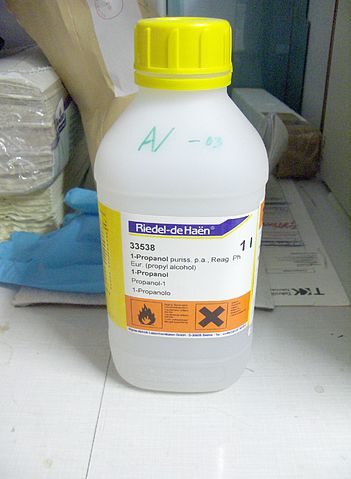Maite Pérez and Javier Mondaza
23/01/2013
Objective: To investigate the main properties of elements.
Materials:
Background:
In the same way books
are arranged in alphabetical order, by publishing companies, etc, in libraries to
found them easier; in the chemistry laboratory we arrange elements in bottles,
indentified by a label which indicate us many things.
Today, we are also going
to focus on those ones which don't appear on the labels, such as: melting and
boiling point, electric continuity, etc.
In order
to calculate electric continuity, we will use a hand-made electrical continuity
measurer:
It will
help us in order to obtain a close loop electrical circuit capable of conducting current, so we can measure with it
its electrical continuity. (See
the image in the materials' list).
-3 test tubes - Test tube holder - Hand-made electrical continuity measurer
- Propanol - Sodium acetate - Lead
-Thermometer - Ceramic plate
Videos on the following post due to technical problems
In today's lesson, we have been calculating the boiling point of Propanol.
Then, by using the we measured its electrical continuity, by using a hand-made electrical continuity measurer (see in Materials) .
It is measured by touching with both poles of the device with the element or compound we are testing. If the bulb turns on, it means that the substance is a conductor; if not, it is an insulator.
Finally, we made up a table which recollected all the data we had obtained and investigated.
It is measured by touching with both poles of the device with the element or compound we are testing. If the bulb turns on, it means that the substance is a conductor; if not, it is an insulator.
Finally, we made up a table which recollected all the data we had obtained and investigated.
Because of the extremely high boiling points and low melting points, we could not reach them in the lab, and that is why we looked for information on the Internet (RUBIN, 2011)
Conclusions
In today's class we have only been participating Javier and Maite. We have been working in group, always helping each other in order to go faster. While one was recording, the other was heating up the propanol, and then we swapped.
At the beginning, we were both a bit scared because, as we know, propanol is a very flammable substance, which can explode very easily. Because of this, we took our time to heat up the propanol. We have also been very careful, in order to avoid propanol pouring from the test tube.
Bibliography
Bibliography
RUBIN, Julian (2011): Boiling and melting points of elements. Taken from:

No comments:
Post a Comment